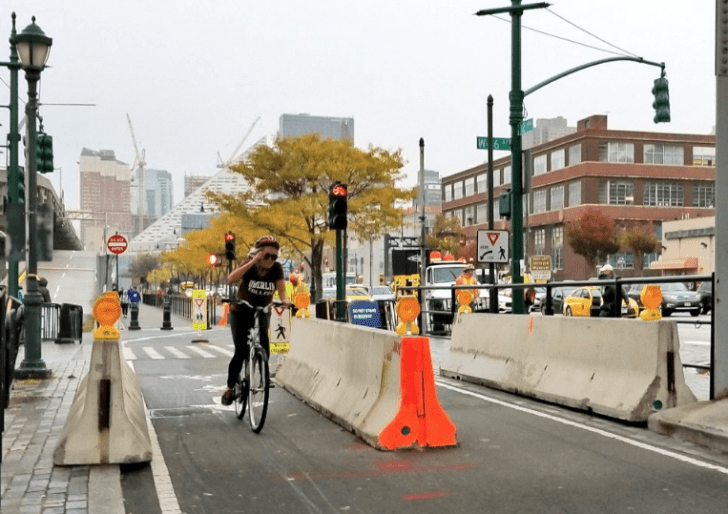Spring is around the corner, and if you ride the West Side Greenway, one question must be consuming you: What's going to happen to the obtrusive security measures that create pinch points on the greenway?
The greenway is begging to be widened -- in the warmer months it's just not big enough to handle everyone who uses it. But after a fatal vehicular attack last fall, state DOT and NYPD dropped down heavy-duty barriers that made the greenway even narrower at intersections.
At 31 locations where motor vehicles cross the greenway, state DOT installed Jersey barriers, and at 26 pedestrian-only crossings, NYPD put down concrete "sugar cubes."
The barriers function better now than they did at first, but once the spring wave of greenway users arrive, it's going to get hairy as people try to funnel into the 20-foot long cattle chutes.
State DOT is aware of the problem and working on a fix for its 31 intersections, but the Jersey barrier replacements won't be in place for peak greenway season this year. State DOT is "designing a permanent solution to replace the temporary security measures on the Route 9A bikeway," an agency spokesperson said, with construction scheduled to begin in the summer and wrap up sometime in 2019.
An inquiry to NYPD regarding the 26 sugar cube locations did not elicit a response.
The state DOT project is still in the design phase, and the agency did not have renderings of the new intersection treatments to share.
In addition to letting advocates advise on the design of these junctions, state DOT should share its construction plans and minimize the disruptions for greenway users.
Construction-related detours on the greenway tend to crop up with little advance notice and drag on far longer than initially anticipated. Between 59th Street and 70th Street, for instance, the Parks Department recently closed the greenway for construction, and it remained under construction last week despite the agency's assurances in December that the closure would only last a few weeks.
State DOT's project will affect the most heavily used segments of the greenway, the single most important artery for bike travel in the city. If the agencies that manage the greenway are ever going to put in place a good process to manage design changes and construction impacts, this is the time to do it.






